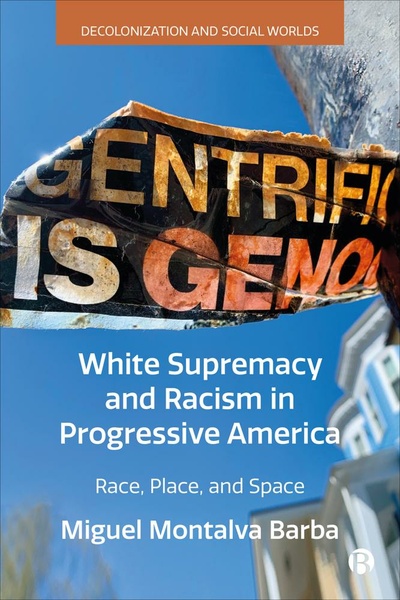ISBN
978-1529235432Dimensions
234 x 156 mmImprint
Bristol University PressISBN
978-1529235449Dimensions
234 x 156 mmImprint
Bristol University PressISBN
978-1529235449Dimensions
234 x 156 mmImprint
Bristol University PressThis book examines the connections between race, place, and space, and sheds light on how they contribute and maintain racial hierarchies.
The author focuses on the White residents of Jamaica Plain, Massachusetts, which, according to the Cooks Political Report Partisan Voting Index, is the most liberal district in the state and 15th in the United States of America. The book uses settler colonialism and critical race theory to explore how self-identified progressive White residents perceive their gentrifying neighborhood and how they make sense of their positionality.
Using the extended case method, as well as in-depth interviews, participant observation, content analysis and visual/media analysis, the author reveals how systemic racialized inequality persists even in a politically progressive borough.
“This excellent book is about contemporary settler colonialism in urban America. It shows that this specific mode of domination is alive and kicking, and that it mixes with White supremacy in subtle and yet obnoxious ways.” Lorenzo Veracini, Swinburne University of Technology
“Barba's book is an eye-opener - forcing its readers to think deeper about white spaces, gentrification and diversity. Indeed, the book provides new insights to the author's proposed term gensociocide, a form of genocide resulting in generational displacement and the eradication of community. This book promptly belongs on any shelf critical of racism, space, and place.” David G. Embrick, University of Connecticut
Miguel Montalva Barba is Assistant Professor of Sociology at the University of Massachusetts Boston.
Introduction: Hidden in Plain Sight
1. Jamaica Plain and Gentrification in Motion
2. Remaking Whiteness
3. Reproducing Whiteness via its Disavowal
4. Community and Diversity
5. “Don’t talk to me about Race, Talk to People of Color”
Conclusion: Gensosiocide












